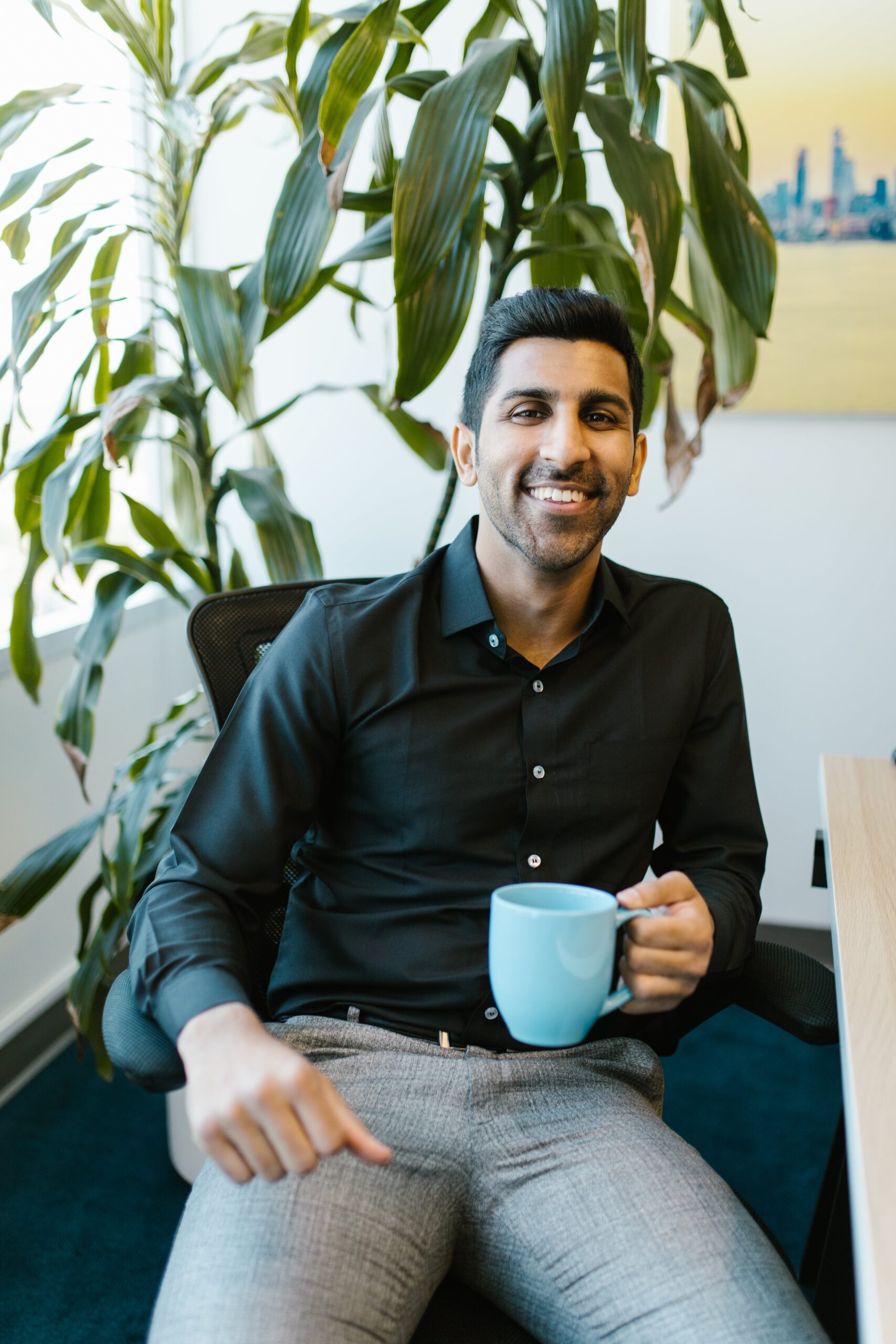Have you ever found yourself stuck in a cycle of overthinking your problems, replaying the same challenges in your mind without getting anywhere?
You’re not alone. Most of us have been conditioned to believe that we need to fully understand and analyse our problems before we can solve them.
But what if there was a different way—one that focuses on where you want to go rather than where you’ve been stuck?
This is exactly what Solution-Focused Brief Therapy (SFBT) offers. Originally developed by Steve de Shazer and Insoo Kim Berg at the Brief Family Therapy Centre in Milwaukee, this approach has revolutionized how people think about change and personal growth.
What started in therapy rooms has now found its way into coaching, offering everyday people a refreshing path to achieving our goals.
Why focusing on solutions changes everything
Imagine you’re trying to get out of a maze. The traditional approach would have you mapping every wrong turn you’ve taken, analysing why you made those choices, and understanding the full layout of where you got lost.
Solution-focused thinking, on the other hand, asks: “What would it look like when you’ve found the exit? What signs would tell you you’re heading in the right direction?”
This shift is more powerful than it might initially seem. As de Shazer et al. (2007) discovered, the solution to your problem often looks nothing like the problem itself—what matters is finding what actually works for you (de Shazer et al., 2007).
Instead of getting bogged down in analysis, you can channel your energy into creating the changes you want to see.
Here’s how this approach works in practice
You already have what you need
Rather than focusing on what’s missing or broken, solution-focused coaching helps you recognize the strengths and resources you already possess.
Think about a time you overcame a challenge. You didn’t suddenly develop new superpowers; you used skills and qualities you already had.
Small steps create big changes
You don’t need to transform your entire life overnight. Sometimes the smallest shift can create a ripple effect.
For example, if you’re struggling with work-life balance, the solution might be as simple as turning off email notifications after 7 PM, rather than completely restructuring your career.
Your future self knows the way
Instead of dwelling on past mistakes or current problems, this approach helps you connect with the person you’re becoming.
When you can clearly see your desired outcome, the path often becomes clearer.
You’re the expert on your life
No one knows your situation better than you do.
A solution-focused coach doesn’t tell you what to do; instead, they help you discover the answers that are already within you.
The questions that change everything
The magic of solution-focused coaching often happens through specific types of questions that shift your perspective instantly.
Let me share the most powerful ones:
The Miracle Question
This is probably the most famous tool in solution-focused work, and for good reason. Here’s how it works: “Imagine you go to sleep tonight, and while you’re sleeping, a miracle happens. The problem that brought you here is completely solved. But since you were asleep, you don’t know the miracle happened.
When you wake up tomorrow morning, what would be the first small thing you’d notice that would tell you something had changed?”
Let’s say you’re feeling overwhelmed at work. Instead of diving into all the reasons why work is stressful, the miracle question helps you paint a picture: “I’d wake up feeling rested. I’d check my phone and not feel that knot in my stomach. I’d actually look forward to my first meeting instead of dreading it.”
This question, as de Shazer et al. (2007) explain, helps you bypass endless problem analysis and instead creates a clear vision of what you actually want your life to look like (de Shazer et al., 2007).
Suddenly, you’re not fighting against something—you’re moving toward something positive.
Scaling questions
These are wonderfully practical. You might be asked: “On a scale of 0 to 10, where 10 means your goal is fully achieved and 0 means things are at their worst, where are you right now?”
Let’s say you answer “4.” The follow-up questions become incredibly revealing: “What’s already happening in your life that puts you at a 4 instead of a 2? What would need to change for you to move from a 4 to a 5?” Bannink (2006) shows how these questions not only help track progress but also highlight the positive things you’re already doing that you might not have noticed.
Finding the exceptions
This is about discovering when your problem isn’t actually a problem. “Tell me about a recent time when this issue wasn’t bothering you as much. What was different about that day? What were you doing differently?”
For instance, if you struggle with confidence at work, you might realize that you felt more confident last Tuesday during the team meeting. What was different? Maybe you had prepared thoroughly, or perhaps you’d had a good conversation with a colleague beforehand.
These exceptions, as Krause (2013) points out, show you that you already have the tools to feel confident—you just need to recognize and replicate the conditions that bring out your best self (Krause, 2013).
Solution-focused coaching in action
Let me show you how this works with a real example.
A client came to coaching feeling completely overwhelmed by their weight and all the implications thereof for their mental and physical health.
They’d tried countless diets, felt guilty about every food choice, and saw their body as “the enemy.”
Traditional approaches might have explored their childhood relationship with food or analysed their emotional eating patterns.
Instead, we started with the miracle question:
“If you woke up tomorrow and felt completely at peace with your health and body, what would be different?”
The client’s eyes lit up:
“I’d wake up feeling energetic. I’d look in the mirror and smile. I’d choose my clothes based on what I love, not what hides my body. I’d cook dinner without feeling guilty about every ingredient.”
From there, we used scaling questions—they rated their current relationship with their body as a 3 out of 10, but realized they were already doing things that kept them from being a 1: they were drinking more water and had started taking evening walks.
We found exceptions too—days when they felt good about their choices, which happened when they prepared healthy snacks ahead of time and when they moved their body in ways that felt joyful rather than punishing.
Instead of a dramatic diet overhaul, the client’s first small step was committing to one 10-minute walk after lunch each day—something that built on their existing evening walk habit.
Within weeks, this single change increased their energy, improved their mood, and most importantly, proved to them that change was possible.
Each small success built their confidence to take the next step, transforming their relationship with health from a burden into a source of self-care and empowerment.
From therapy room to your daily life: Solution-focused coaching
While solution-focused approaches started in therapy, they’ve found a natural home in coaching because they’re perfectly suited for people who are fundamentally healthy and motivated but want to level up their lives.
Whether you’re looking to advance your career, improve relationships, or simply feel more fulfilled, this approach meets you where you are.
The beauty of solution-focused coaching is its versatility. As Szabó and Meier (2017) highlight, it provides a practical, client-centered approach that can create lasting change even in short-term coaching relationships (Szabó & Meier, 2017).
Here’s how it might work for you:
Getting clear on what you actually want
Instead of starting with “I hate my job,” solution-focused coaching helps you articulate “I want work that energizes me and uses my creativity.” This clarity alone is transformative.
Building on your wins
Rather than focusing on what you’re not good at, you’ll identify what you’re already doing well and find ways to do more of it. If you’re great at building rapport with new clients but struggle with follow-up, the focus becomes: “How can we create more opportunities for you to meet new people while building systems that make follow-up feel natural?”
Creating momentum through small actions
Big goals can feel overwhelming, but solution-focused coaching breaks them down into manageable steps that build on each other. Instead of “I need to get in shape,” it becomes “What’s one small thing you could do this week that would make you feel good about taking care of your body?”
Staying connected to your ‘why’
The approach keeps you focused on your desired outcome, which helps maintain motivation when challenges arise.
What the research tells us
You might be wondering: “This sounds great, but does it actually work?”
The research is encouraging. Studies like the one by Franklin et al. (2012) have found that solution-focused approaches are effective, efficient, and adaptable across many different situations, particularly for issues like anxiety and depression (Franklin et al., 2012). Research by Kim et al. (2010) has also shown positive results across different age groups and family situations.
However, it’s important to have realistic expectations. Much of the strongest research comes from clinical settings, and while the principles clearly transfer to coaching, we’re still building the evidence base specifically for coaching applications (Kim & Franklin, 2009; Franklin et al., 2012). Additionally, like many therapeutic approaches, some studies have limitations in terms of sample size and long-term follow-up.
What this means for you is that while solution-focused coaching has a solid foundation and countless success stories, it’s important to work with a skilled coach who can adapt the approach to your unique situation and needs.
Your journey starts with your next step
The power of solution-focused coaching lies in its fundamental optimism about human potential.
Instead of assuming you’re broken and need fixing, it starts with the belief that you already have what you need to create positive change in your life.
You just need the right questions, perspective, and support to unlock it.
Whether you’re facing a specific challenge or simply want to make the most of your potential, this approach offers a refreshing alternative to dwelling on problems.
By focusing on solutions, building on your strengths, and taking small steps toward your preferred future, you can create meaningful change more quickly and sustainably than you might have thought possible.
————————————–
Written by Panagiotis Giannikakis, Health Coach
Ready to discover what’s possible when you focus on solutions instead of problems? Book a session with Panagiotis today!















